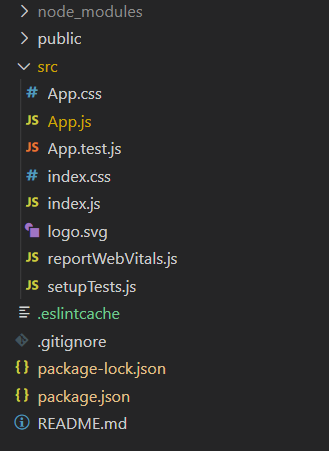ReactJS UI Ant Design Input Component
Last Updated :
02 Jun, 2021
Ant Design Library has this component pre-built, and it is very easy to integrate as well. Input Component is used to create a basic widget for getting the user input is a text field. We can use the following approach in ReactJS to use the Ant Design Input Component.
Input Props:
- addonAfter: It is used to denote the label text displayed after the input field.
- addonBefore: It is used to denote the label text displayed before the input field.
- allowClear: It is used to remove input content with a clear icon if it is set to true.
- bordered: It is used to indicate whether it has border style or not.
- defaultValue: It is used to denote the initial input content.
- disabled: It is used to indicate whether the input is disabled or not.
- id: It is used to denote the ID for input.
- maxLength: It is used to denote the max length.
- prefix: It is used to denote the prefix icon for the Input.
- size: It is used to denote the size of the input box.
- suffix: It is used to denote the suffix icon for the Input.
- type: It is used to denote the type of input.
- value: It is used to denote the input content value.
- onChange: It is the callback function that is triggered when user input changes.
- onPressEnter: It is the callback function that is triggered when Enter key is pressed.
Input.TextArea Props:
- allowClear: It is used to remove input content with a clear icon if it is set to true.
- autoSize: It is used to denote the Height autosize feature.
- bordered: It is used to indicate whether it has border style or not.
- defaultValue: It is used to denote the initial input content.
- maxLength: It is used to denote the max length.
- showCount: It is used to indicate whether show text counts or not.
- value: It is used to denote the input content value.
- onPressEnter: It is the callback function that is triggered when Enter key is pressed.
- onResize: It is the callback function that is triggered when resize happens.
Input.Search Props:
- enterButton: It is used to indicate whether to show an enter button after an input or not.
- loading: It is used to indicate whether to show search box with loading effect or not.
- onSearch: It is the callback function that is triggered when you press enter key or click on the search-icon, clear-icon.
Input.Group Props:
- compact: It is used to indicate whether to use compact style or not.
- size: It is used to denote the size of the included Input fields.
Input.Password Props:
- iconRender: It is used for the custom toggle button.
- visibilityToggle: It is used to indicate whether to show the toggle button or not.
Input Methods:
- blur(): This function is used to remove focus.
- focus(): This function is used to get focus.
Creating React Application And Installing Module:
-
Step 1: Create a React application using the following command:
npx create-react-app foldername
-
Step 2: After creating your project folder i.e. foldername, move to it using the following command:
cd foldername
-
Step 3: After creating the ReactJS application, Install the required module using the following command:
npm install antd
Project Structure: It will look like the following.

Project Structure
Example: Now write down the following code in the App.js file. Here, App is our default component where we have written our code.
App.js
import React, { useState } from 'react'
import "antd/dist/antd.css";
import { Input } from 'antd';
export default function App() {
const [name, setName] = useState('')
return (
<div style={{
display: 'block', width: 700, padding: 30
}}>
<h4>ReactJS Ant-Design Input Component</h4>
<>
<Input
placeholder="Enter your Name"
onChange={(e) => setName(e.target.value)}
/>
Name: {name}
</>
</div>
);
}
|
Step to Run Application: Run the application using the following command from the root directory of the project:
npm start
Output: Now open your browser and go to http://localhost:3000/, you will see the following output:

Reference: https://ant.design/components/input/
Like Article
Suggest improvement
Share your thoughts in the comments
Please Login to comment...